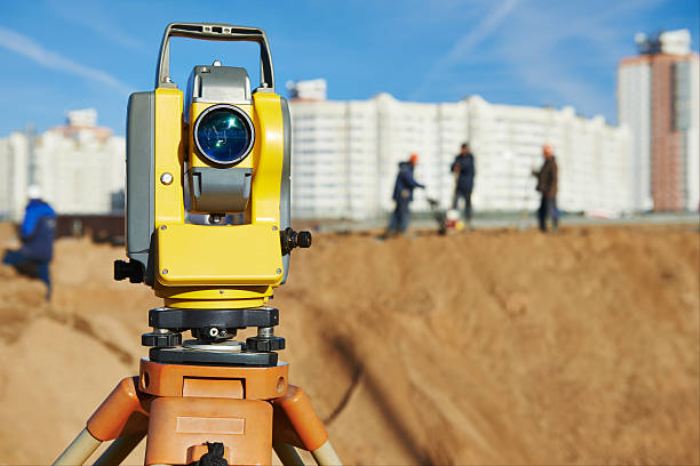Electronic Distance Measurement (EDM): A Comprehensive Overview with Formulas and Procedure for Exam Preparation
Introduction:
Electronic Distance Measurement (EDM) stands as a testament
to the remarkable strides taken in the field of surveying and geomatics. In an
era where sustainability and efficiency are paramount, EDM emerges as a pivotal
technique, poised to redefine the way we measure distances and shape our built
environment. This educational document is designed to provide an
all-encompassing perspective on EDM, incorporating essential concepts,
pertinent formulas, and a step-by-step procedure that will undoubtedly enhance
your exam readiness and understanding of this groundbreaking technology.
A Glimpse into EDM:
At its core, EDM is a modern method for determining
distances between two points, leveraging electromagnetic waves or signals to
achieve precision that surpasses traditional methodologies. By embracing
cutting-edge technology, EDM has gained prominence across engineering and
geospatial disciplines, setting a new standard for accuracy and efficiency in
distance measurement. The departure from conventional methods like chain and
tape is marked by the superior capabilities of EDM, making it a key player in
shaping our connected and sustainable future.
Working Principles:
The foundation of EDM rests upon two main working
principles: phase-based measurement and time-of-flight measurement.
Phase-Based Measurement: This technique involves measuring the phase difference between transmitted and received electromagnetic waves. The resulting phase shift is then utilized to calculate the distance between the instrument and the target point. The formula that governs this methodology is as follows:
Time-of-Flight Measurement: In this method, the time taken for an electromagnetic signal to travel from the instrument to the target and back is harnessed for distance calculation. This time of flight is a crucial parameter in this technique, with the formula being:
Factors Influencing EDM Measurements:
The accuracy of EDM measurements is influenced by various factors that must be taken into account to ensure precise results.
Atmospheric Conditions: The impact of atmospheric conditions, including variations in temperature, humidity, and pressure, cannot be understated. Refraction caused by these conditions affects the speed of electromagnetic waves and consequently, the calculated distance.
Instrument Precision: The quality of the instrument and its calibration significantly influence measurement accuracy. Regular maintenance and calibration are imperative to ensure consistent and reliable results.
Target Quality: The reflector or prism used in the
measurement process plays a crucial role. The reflector's surface condition and
coating impact signal reflectance and, subsequently, measurement accuracy.
Advantages of EDM:
Embracing EDM offers a multitude of advantages that extend beyond just accurate distance measurement.
Accuracy: EDM is renowned for its high accuracy and precision in determining distances, a trait that is invaluable in surveying and engineering applications.
Speed: The efficiency of EDM measurements shines through in their speed. The rapid acquisition of measurements accelerates the surveying process, increasing overall productivity.
Long Distances: Unlike traditional methods, EDM has the capability to measure long distances with exceptional accuracy. This characteristic expands the horizons of surveying possibilities.
Applications of EDM:
The significance of EDM reverberates across various fields,
each benefiting from its capabilities in unique ways.
Surveying: Land surveyors, armed with EDM technology, can meticulously measure distances to create accurate maps, delineate property boundaries, and lay the groundwork for construction projects. The precision offered by EDM contributes to the creation of reliable and informative survey data.
Geodesy: The science of accurately measuring and understanding Earth's shape and dimensions finds a steadfast ally in EDM. Its ability to determine distances with high precision aids in shaping our understanding of the planet's vast dimensions.
Construction: In the realm of construction, EDM plays a
pivotal role in ensuring precise layout and positioning of structures. From
skyscrapers to highways, the accurate measurements provided by EDM facilitate
the construction process, minimizing errors and rework.
Step-by-Step Procedure for EDM Measurements:
A comprehensive grasp of the procedure involved in EDM
measurements is crucial for accurate and reliable results. Here is a
step-by-step breakdown of the process:
1. Instrument Setup: Begin by setting up the EDM
instrument at the base point, ensuring its stability and proper alignment.
2. Target Placement: Position a reflector or prism at
the target point. The reflector will receive the electromagnetic signal emitted
by the instrument.
3. Signal Emission: Initiate the process by emitting an
electromagnetic signal from the instrument. This signal will travel towards the
target point.
4. Signal Reflection: The reflector or prism placed at
the target point will reflect the signal back towards the instrument.
5. Signal Detection: The instrument will detect the
reflected signal, measuring either the phase shift (in phase-based measurement)
or the time delay (in time-of-flight measurement).
6. Data Processing: Utilize the appropriate
formula—either the phase-based formula or the time-of-flight formula—to
calculate the distance based on the detected phase shift or time delay.
7. Apply Corrections: To ensure accuracy, it's essential
to apply atmospheric corrections that account for the effects of atmospheric
refraction. Additionally, instrument calibration factors should be considered.
8. Final Distance Calculation: With corrections applied,
calculate the final corrected distance between the instrument and the target point.
Exam Pointers and Formulas:
As you prepare for exams, keep these key pointers in mind:
1. Mastery of the formulas for both phase-based and time-of-flight measurements is essential.
2. Understand the significance of atmospheric corrections and their role in accurate distance determination.
3. Thoroughly grasp the step-by-step procedure for EDM measurements, as it forms the foundation for precise results.
Conclusion
The journey into the realm of Electronic Distance
Measurement (EDM) continues to unfold. As we delve into applications and
procedure, we gain a deeper appreciation for the impact EDM has across various
fields. With a solid understanding of the working principles, advantages, and
procedural intricacies, you're well-equipped to approach EDM-related questions
on exams with confidence and clarity. Stay tuned for Page 3, where we explore
exam readiness and strategies to ensure your success in mastering this
transformative technology.



Comments
Post a Comment